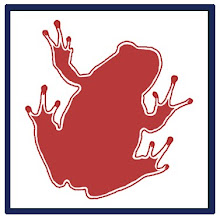Bonnie Rosenberg
October 8, 2009
The Delavan Art Gallery’s retrospective of George F. Earle comprehensively charts the progression of one artist’s style along with his diverse choice of subject matter. Hung chronologically, the show plots the trajectory of Earle’s long artistic life.
![]() In the gallery’s Wild Card space, the viewer can see a bevy of 95-year-old Earle’s classically American paintings. Richly colored scenes of rural New York and beyond expose the viewer to the familiar yet striking. Earle abstracts nature with his highly linear style and inventive use of color.
In the gallery’s Wild Card space, the viewer can see a bevy of 95-year-old Earle’s classically American paintings. Richly colored scenes of rural New York and beyond expose the viewer to the familiar yet striking. Earle abstracts nature with his highly linear style and inventive use of color.
In “The Bay in Fall,” a barrage of fluorescent yellows, oranges and reds are balanced by the cool, blue color palette that dominates the right half of the painting.
The crown jewel of the exhibit is Earle’s large scale “Clark Reservation.” This wooded vignette is laded with color, texture, and imagination. Each natural surface is treated with a different painting technique, the conglomeration of which amounts to a visually stunning painting. The large tree trunk that dominates the composition seems to come to life with its snake-like appearance – its white, red, blue, and yellow scales slink across the painting. Globs of paint jet out from the canvas as they intersperse with the swirls of color that upon closer inspection come to resemble Van Gogh’s undulating brushstrokes.
Each painting in the collection offers insight into the artist’s skill. As agreeable as the paintings are themselves, perhaps the greater attraction is the clear delineation of an artist’s entire career. It is varied and vibrant.

1 comment:
These are absolutely fantastic pieces!
Post a Comment